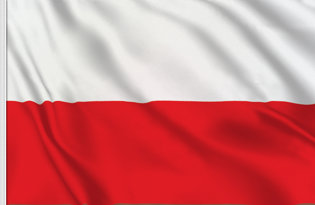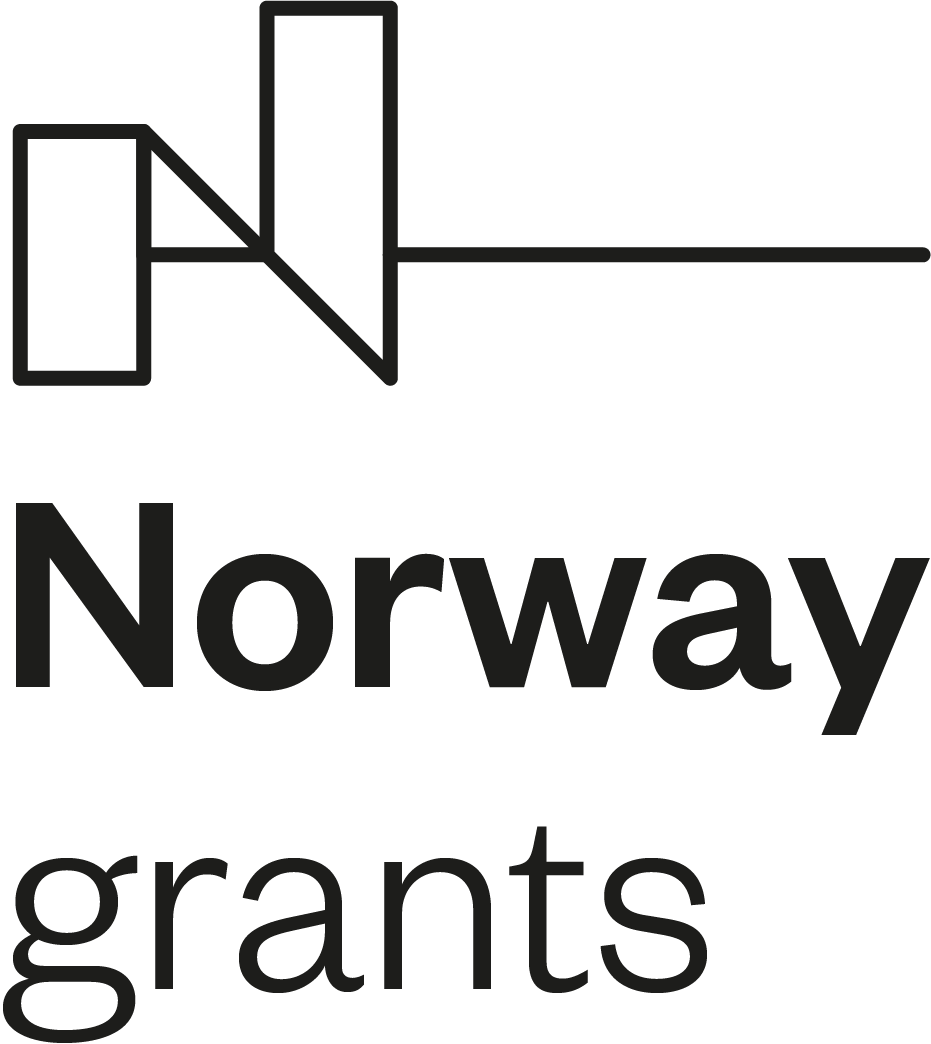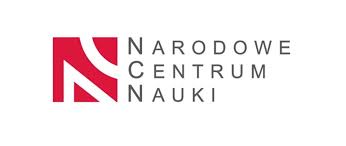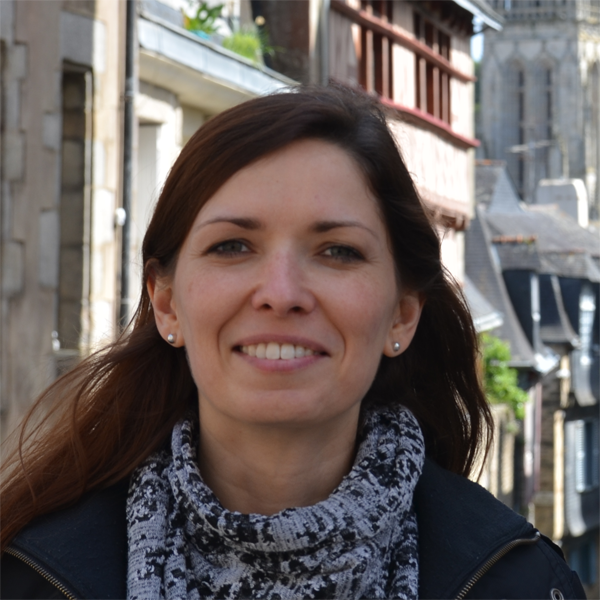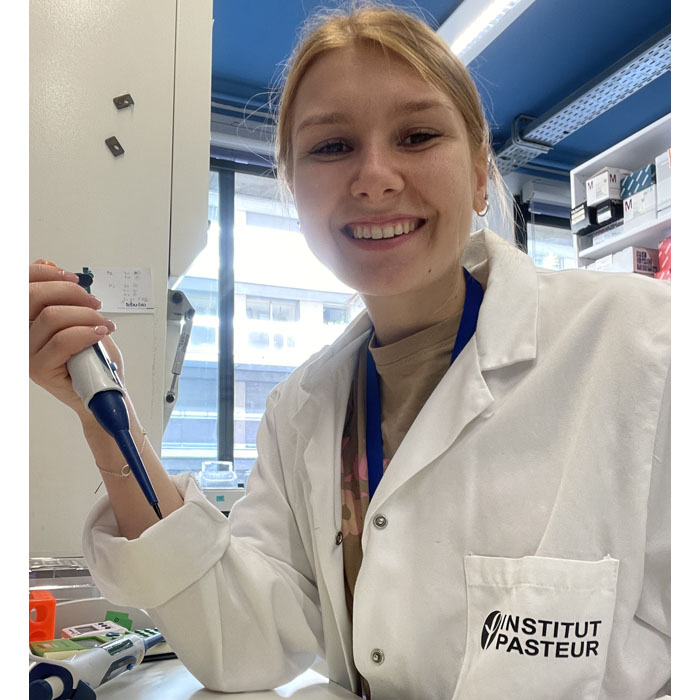Investigation into the mechanism of regulation of nicotinic acetylcholine receptors
POLS-2020/37/K/NZ3/04098
Neurological disorders such as Alzheimer’s disease, schizophrenia, and Parkinson’s disease, in addition to drug addiction have long been linked to the cholinergic system, and specifically nicotinic acetylcholine receptors. These receptors bind a chemical signal (neurotransmitters) and convert it to an electrical signal (ion conductance). They belong to a class of pentameric ligand-gated ion channels composed of five individual similar or sometimes identical protein subunits that form an ion channel. They have a conserved general structure which includes three domains. The extracellular domain, the protein region located outside of the cell, contains the neurotransmitter binding site. The transmembrane domain forms the ion channel pore that selectively allows ions to flow along their concentration gradient. The intracellular domain, the protein region inside of the cell, is thought to be primarily involved in the regulation and trafficking of the receptor. This family of receptors is involved in all major functions of the central nervous system. An enhanced understanding of the mechanisms for functional modulation, in addition to the structural determination of the neurotransmitter binding site, resulted in many pharmacological advances. Yet the numerous years of research have not produced any robust therapies for the maledictions caused by a dysfunction of nicotinic acetylcholine receptors.
This project expressly aims to study the mechanism(s) of functional regulation of nicotinic acetylcholine receptors through their intracellular domain, for which very little is known. Targeting the regulatory system of these receptors may form the basis for developing new therapeutics against neurological disorders.
Within the project a protein composed of an intracellular domain of nicotinic acetylcholine receptors linked to a soluble homologous protein will be created. Using this soluble linked-protein as a tool to identify proteins which interact with the intracellular domain, this project will determine novel targets for current pharmaceutical therapeutic objectives. These newly discovered targets will generate more successful remedies for neurological disorders such as Alzheimer’s and schizophrenia.
Additionally this project will study the mechanisms of action of the identified regulatory proteins. The subtype selective regulation may be identified by studying the role that the various subunit compositions of the receptor, otherwise known as stoichiometry, play in regulatory protein binding. Understanding the intricate mechanism of receptor regulation is important to combat neurodegenerative diseases. Through the development of small single-domain antibodies, nanobodies, against specific receptor stoichiometries this project will answer questions about regulatory differences and develop an understanding of regulatory mechanisms. These same nanobodies will also be used in the future projects as tools to properly localize given stoichiometries in the brain, creating a translational bridge between the biochemical mechanisms of regulation to the neurobiological system composition.
Understanding the mechanisms of regulation of nicotinic acetylcholine receptors, an aspect that has thus far remained elusive, is the key to developing efficient therapeutics for neurological disorders. This proposal attempts to develop such an understanding in the hope that a more effective forthcoming pharmaceutical approach may arise as a result.
Results
The project set out to answer these questions through two work plans, one: utilizing A.c.-AChBP/nAChRICD chimeras to determine and study nAChRICD binding partners; and two: utilizing site-specific VHH nanobodies to evaluate the stoichiometric influence on ICD binding.
As a fishing experiment the results of the project were not guaranteed from the out-set, yet everything planned in this project was completed to the extent of scientifically feasibility. Still, certain aspects were not achieved.The first work plan was not achieved as many problems arose with the purification of the A.c.-AChBP/nAChRICD chimeras. Stable cell-lines were generated for various A.c.-AChBP/nAChRICD constructs. All contained an N-terminal FLAG tag, used for affinity purification. The large-scale purification yielded poor expression and an aggregation of the protein. Therefore, efforts were concentrated on optimization of large-scale purification.
Running the purification products on a denaturing gel clearly shows additional bands that do not contain a FLAG sequence, but when oversaturating the western blot, to identify even the faintest of bands, multiple bands were identified to have a protein which compromises the FLAG sequence. The bands between the initial transient transfections that showed promise and the generated stable cell-lines differed, especially for the Ac-α4ICD/β2ICD, but in principal all major bands were seen between the samples, even if their intensity differed. It was decided to identify the unknown prominent band in the stable cell-line with the Ac-α7ICD, with the hope that it was already an intracellular domain binder of the α7-nAChR. A fresh batch was sent for sequence analysis and the strong binder was ultimately identified as serum albumin from bovine. This unfortunately meant that since the protein is secreted from an
HEK293S Gnt1- cell-line which grows in Dulbecco’s Modified Eagle Medium supplemented with glutamine and 10% fetal bovine serum that the aggregation and association is not coming from some
endogenous protein within the human cell-line but rather the extracellular medium. Two methods were attempted to address the aggregation which was assumed to occur due to interaction with
the extracellular medium used. The ICD contains many cysteine residues and therefore the first method assumed that if we reduce the already folded and purified protein, that this may recover properly folded pentamer. FPLC analysis of the purified protein in comparison to the reduced protein showed no appreciable change in profile. The second option was to recreate the cell-lines in serum-free HEK293F Freestyle cells, with the hope that the lack of serum albumin may avoid the aggregation seen after purification. These suspension cells have been adapted to thrive in serumfree medium. Transient transfections were performed and affinity purified with verification using gel electrophoresis, western blot, and size-exclusion chromatography. Neither produced good results. The gel of denatured samples showed two bands but neither was detected through western, which would indicate no expression and/or some contaminating protein
secreted from HEK293Freestyle cells, as the medium itself is theoretically protein free. Results of the mass spectrometry sequencing were not clear as ICD fragments of β2-nAChR were
identified in the ~60kDa band, but the theoretical molecular weight of the construct should be 40.7kDa, and size exclusion chromatrography showed a retention time similar to a monomer.
Because the transient transfections failed to produce a stable pentamer or a clear result, the stable cellline that exists in HEK293GnT1- cells was attempted to be adapted to the serum-free medium. This was done as both direct exchange, in which the cells seemed to tolerate the first passage before dying, and a slow steady exchange going from full DMEM to ¾ to ½ to ¼ and finally full serum-free medium. Since the cells did not tolerate the ¼ DMEM, ultimately dying in the full serumfree medium, it was decided to pass multiple plates and thoroughly wash them before exchanging the media to serum-free media in order to collect 150mL for a mini-batch purification before the cells died. This attempt was fortunately successful, removing the aggregation and giving larger peaks than a ~20kDa protein. Unfortunately, it did not yield a single stable pentameric protein, rather many truncated forms of the protein (identified by
western), along with the two bands seen in the transient transfections (again not present by western) and one other unknown band were visualized on an analysis of the sample. Unfortunately, at this point funds for further mass spectrometry analysis were exhausted, and the project promoter refused a reallocation of funds to be able to determine the unknown band. FPLC analysis indicated that the construct does not form stable pentamers, and that auto-proteolysis may prove problematic for its use even in a monomeric form.
Although promising, due to time and funding constraints in this project, the lack of a stable pentamer after many attempts resulted in the abandonment of further attempts to make work plan 1 successful. Using the construct as a tool to search for intracellular domain interacting partners seems problematic at this point, and the other possible importance of the construct (its use to determine the structure of the ICD) was nullified with the release of an NMR structure of the α7-nAChR TMD/ICD (Bondarenko, V. et al. Nat. Commun. 2022) during this project.
The second work-plan was partially achieved in that specific VHH nanobodies were created, although evaluation of stoichiometric influence on ICD binding could not be evaluated.
Various mutants were generated for the extracellular constructs. The initial mimics of the α7-A.c.-AChBP construct for α4/α4- and α4/β2- either did not express or aggregated. Therefore, a reduction in the mutations was done to find the best characterization of the site which expresses. The test for expression was relatively easy, but verification of proper folding was laborious and time intensive, as a mini-purification was required of each construct. Low expression levels also meant repeats were necessary for some constructs. This greatly slowed down the progress as the results of a given mutant were crucial in deciding further mutations. Of the initial constructs, only some of the α4/α4 constructs expressed, three of which aggregated and one expressed as a monomer. Therefore, more α4/α4- and α4/β2-A.c.-AChBP were created, with the hopes of finding the corresponding residues in β2 that preclude expression of this chimera. Only two of the α4/α4-constructs expressed. Because of the delays in WP1, an effort was concentrated on producing a mutant that was truer to the human α4/α4-interface, as the initial constructs which expressed well had very few mutations. At this time, the PI had upgraded the purchased chromatography equipment for this project using funds obtained for another project, which allowed for the simultaneous detection of fluorescence during the chromatography run. Because of the very time-consuming process for evaluating mutants, and the newly
available upgrade, a construct of A.c.-AChBP-Y55W linked with a C-terminal GFP was created to by-pass the need for small-batch purifications and, in some cases, the creation of stable-lines in order to achieve these purifications. This construct was readily detectable by fluorescence size-exclusion chromatography from 100μL of a 10mL media sample on day 3 after a transient transfection. Although this meant recreating a few of the constructs with such C-terminal linkage, the verification of mutants was much simpler and efficient afterwards. Ultimately, a construct for α4/α4-A.c.-AChBP was found that expresses and contains nearly the same amount of surface mutations as that of the published α7-A.c.-AChBP (Nemecz et. al 2011). Due to time constraints these constructs were not able to be screened against the VHH library within the time limit of the project. Due to the difficulty of obtaining each combination of the planned A.c.-AChBP chimeras (α4/α4, α4/β2, α7/α7, α7/β2), in addition to subunit interface constructs it was decided to create constructs that mimic the main immunogenic region of each subunit, as a secondary option for the isolation of specific VHHs against certain subtypes. Therefore, four additional mutants that built upon the previously published α7-A.c.-AChBP
construct were created. Fortunately, these constructs expressed with the full-mutation on the first attempt. The extended α7-A.c.-AChBP construct was screened against the VHH library, but due to time constraints the apical α4-A.c.-AChBP and apical β2-A.c.-AChBP constructs were not screened.
Understanding that there were also delays in WP2a, WP2b was moved up and the generation of a VHH-library was started earlier. Although the theoretical diversity was low, a panning was completed against the already created α7-A.c.-AChBP. Unfortunately, no hit was found during the panning. With the successful application for additional funding, equipment was purchased that allowed for an enhancement of the diversity of this initial library through a more efficient transformation of the cDNA library into bacterial cells. It took some additional time to recreate a better synthetic phage-display VHH library, but ultimately it paid off and a theoretical diversity of 5.4x1011 was obtained. To ensure that the project obtains at least some results relevant to the original goals, while the α4/α4-A.c.-AChBP constructs were being created and tested the new VHH library was screened against full-length α4β2-nAChRs expressed in HEK293 cells, in addition to repeating the screen against the extended α7-A.c.-AChBP mutant. The screens against the extended α7-A.c.-AChBP yielded positive VHHs, but they were not selective for the mutant over the wildtype A.c.-AChBP. The screen against cells expressing α4β2-nAChR was successful and VHHs that were selective over the background of HEK293 cells without receptor expression were found. Due to a lack of funding, a focus was given to sequence and characterize the α4β2-nAChR VHHs in the hope that one of them may be found to be selective to either the α4α4-interface or merely the α4-nAChR subunit alone or conversely the β2β2-
interface or merely the β2-nAChR subunit alone. Further experiments are needed to verify the VHHs before a publication can be submitted, and unfortunately this falls outside of the scope of the current project. The needed equipment was acquired as a result of obtained funding for another project unrelated to the POLS project, and this equipment may be used to fulfil the requirements for a proper characterization of the VHH.
The functional characterization continues, but because of the deadline of the project completion and June 30th, 2024 as an accepted publication deadline, a review article about VHHs against pentameric ligand-gated ion channels was submitted to accomplish the requirements of this project, rather than risk that the publication of the VHHs is not accepted by June 30th, 2024. Ultimately this will actually produce a second published article, as the review was not counted in the planned publications.
Team Members
Master's Student
Equipment
Equipment that was purchased as a result of this funding:
- Chromatography System
- ÄKTA Go
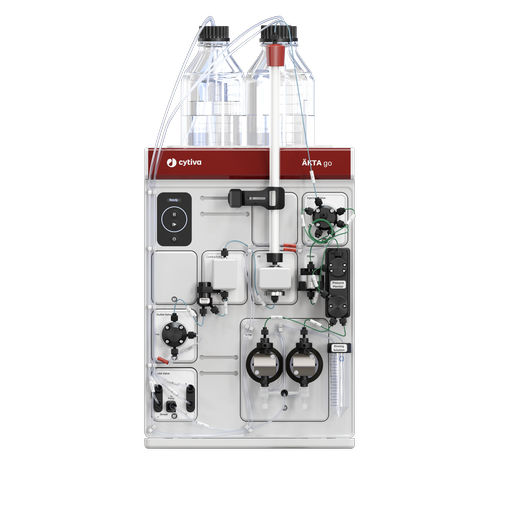
- Refrigerator for storing ÄKTA system

- Stationary Computer

- Laptop

Dissemination Events
2023-09-[18-20]:
Weronika Nowak presented a poster at the Single-Domain Antibodies conference in Paris, France.
Nine people stopped to discuss the poster.
2023-06-[14-16]:
Weronika Nowak presented a poster at the Nano(&)BioMateriały – od teorii do aplikacji conference.
Four people stopped to discuss the poster.
2023-03-03:
Open Day: Hosted a workshop entitled: Visualization methods and protein analysis.
3x(8/8) Attendees
2023-02-20:
dr Dorota Nemecz presented her abstract at the Biophysical Society Annual Meeting in San Diego. @13:45 Exhibit Hall BC Poster#:LB75.
Seven people stopped to discuss the poster.
2023-01-13:
Noc Biologów: Drs Dorota and Ákos Nemecz partipated in the Polish biology night event at UMK w Toruniu (Neurons & Underwater Playground). (10/10 Attendees each)
dr Dorota Nemecz hosted a video competition: Dziękujemy za niepalenie (2 Submissions), and hosted a Lab-Escape event (2 groups of 6).
2022-10-27:
Departmental Seminar presented by Dr. Ákos Nemecz @10am Room C226
12 Attendees
2021-06-21:
Dr. Ákos Nemecz presented the POLS project at the NCN Basic Research Program promotional event
This project expressly aims to study the mechanism(s) of functional regulation of nicotinic acetylcholine receptors through their intracellular domain, for which very little is known. Targeting the regulatory system of these receptors may form the basis for developing new therapeutics against neurological disorders.
Within the project a protein composed of an intracellular domain of nicotinic acetylcholine receptors linked to a soluble homologous protein will be created. Using this soluble linked-protein as a tool to identify proteins which interact with the intracellular domain, this project will determine novel targets for current pharmaceutical therapeutic objectives. These newly discovered targets will generate more successful remedies for neurological disorders such as Alzheimer’s and schizophrenia.
Additionally this project will study the mechanisms of action of the identified regulatory proteins. The subtype selective regulation may be identified by studying the role that the various subunit compositions of the receptor, otherwise known as stoichiometry, play in regulatory protein binding. Understanding the intricate mechanism of receptor regulation is important to combat neurodegenerative diseases. Through the development of small single-domain antibodies, nanobodies, against specific receptor stoichiometries this project will answer questions about regulatory differences and develop an understanding of regulatory mechanisms. These same nanobodies will also be used in the future projects as tools to properly localize given stoichiometries in the brain, creating a translational bridge between the biochemical mechanisms of regulation to the neurobiological system composition.
Understanding the mechanisms of regulation of nicotinic acetylcholine receptors, an aspect that has thus far remained elusive, is the key to developing efficient therapeutics for neurological disorders. This proposal attempts to develop such an understanding in the hope that a more effective forthcoming pharmaceutical approach may arise as a result.
As a fishing experiment the results of the project were not guaranteed from the out-set, yet everything planned in this project was completed to the extent of scientifically feasibility. Still, certain aspects were not achieved.
The first work plan was not achieved as many problems arose with the purification of the A.c.-AChBP/nAChRICD chimeras. Stable cell-lines were generated for various A.c.-AChBP/nAChRICD constructs. All contained an N-terminal FLAG tag, used for affinity purification. The large-scale purification yielded poor expression and an aggregation of the protein. Therefore, efforts were concentrated on optimization of large-scale purification.
Running the purification products on a denaturing gel clearly shows additional bands that do not contain a FLAG sequence, but when oversaturating the western blot, to identify even the faintest of bands, multiple bands were identified to have a protein which compromises the FLAG sequence. The bands between the initial transient transfections that showed promise and the generated stable cell-lines differed, especially for the Ac-α4ICD/β2ICD, but in principal all major bands were seen between the samples, even if their intensity differed. It was decided to identify the unknown prominent band in the stable cell-line with the Ac-α7ICD, with the hope that it was already an intracellular domain binder of the α7-nAChR. A fresh batch was sent for sequence analysis and the strong binder was ultimately identified as serum albumin from bovine. This unfortunately meant that since the protein is secreted from an
HEK293S Gnt1- cell-line which grows in Dulbecco’s Modified Eagle Medium supplemented with glutamine and 10% fetal bovine serum that the aggregation and association is not coming from some
endogenous protein within the human cell-line but rather the extracellular medium. Two methods were attempted to address the aggregation which was assumed to occur due to interaction with
the extracellular medium used. The ICD contains many cysteine residues and therefore the first method assumed that if we reduce the already folded and purified protein, that this may recover properly folded pentamer. FPLC analysis of the purified protein in comparison to the reduced protein showed no appreciable change in profile. The second option was to recreate the cell-lines in serum-free HEK293F Freestyle cells, with the hope that the lack of serum albumin may avoid the aggregation seen after purification. These suspension cells have been adapted to thrive in serumfree medium. Transient transfections were performed and affinity purified with verification using gel electrophoresis, western blot, and size-exclusion chromatography. Neither produced good results. The gel of denatured samples showed two bands but neither was detected through western, which would indicate no expression and/or some contaminating protein
secreted from HEK293Freestyle cells, as the medium itself is theoretically protein free. Results of the mass spectrometry sequencing were not clear as ICD fragments of β2-nAChR were
identified in the ~60kDa band, but the theoretical molecular weight of the construct should be 40.7kDa, and size exclusion chromatrography showed a retention time similar to a monomer.
Because the transient transfections failed to produce a stable pentamer or a clear result, the stable cellline that exists in HEK293GnT1- cells was attempted to be adapted to the serum-free medium. This was done as both direct exchange, in which the cells seemed to tolerate the first passage before dying, and a slow steady exchange going from full DMEM to ¾ to ½ to ¼ and finally full serum-free medium. Since the cells did not tolerate the ¼ DMEM, ultimately dying in the full serumfree medium, it was decided to pass multiple plates and thoroughly wash them before exchanging the media to serum-free media in order to collect 150mL for a mini-batch purification before the cells died. This attempt was fortunately successful, removing the aggregation and giving larger peaks than a ~20kDa protein. Unfortunately, it did not yield a single stable pentameric protein, rather many truncated forms of the protein (identified by
western), along with the two bands seen in the transient transfections (again not present by western) and one other unknown band were visualized on an analysis of the sample. Unfortunately, at this point funds for further mass spectrometry analysis were exhausted, and the project promoter refused a reallocation of funds to be able to determine the unknown band. FPLC analysis indicated that the construct does not form stable pentamers, and that auto-proteolysis may prove problematic for its use even in a monomeric form.
Although promising, due to time and funding constraints in this project, the lack of a stable pentamer after many attempts resulted in the abandonment of further attempts to make work plan 1 successful. Using the construct as a tool to search for intracellular domain interacting partners seems problematic at this point, and the other possible importance of the construct (its use to determine the structure of the ICD) was nullified with the release of an NMR structure of the α7-nAChR TMD/ICD (Bondarenko, V. et al. Nat. Commun. 2022) during this project.
The second work-plan was partially achieved in that specific VHH nanobodies were created, although evaluation of stoichiometric influence on ICD binding could not be evaluated.
Various mutants were generated for the extracellular constructs. The initial mimics of the α7-A.c.-AChBP construct for α4/α4- and α4/β2- either did not express or aggregated. Therefore, a reduction in the mutations was done to find the best characterization of the site which expresses. The test for expression was relatively easy, but verification of proper folding was laborious and time intensive, as a mini-purification was required of each construct. Low expression levels also meant repeats were necessary for some constructs. This greatly slowed down the progress as the results of a given mutant were crucial in deciding further mutations. Of the initial constructs, only some of the α4/α4 constructs expressed, three of which aggregated and one expressed as a monomer. Therefore, more α4/α4- and α4/β2-A.c.-AChBP were created, with the hopes of finding the corresponding residues in β2 that preclude expression of this chimera. Only two of the α4/α4-constructs expressed. Because of the delays in WP1, an effort was concentrated on producing a mutant that was truer to the human α4/α4-interface, as the initial constructs which expressed well had very few mutations. At this time, the PI had upgraded the purchased chromatography equipment for this project using funds obtained for another project, which allowed for the simultaneous detection of fluorescence during the chromatography run. Because of the very time-consuming process for evaluating mutants, and the newly
available upgrade, a construct of A.c.-AChBP-Y55W linked with a C-terminal GFP was created to by-pass the need for small-batch purifications and, in some cases, the creation of stable-lines in order to achieve these purifications. This construct was readily detectable by fluorescence size-exclusion chromatography from 100μL of a 10mL media sample on day 3 after a transient transfection. Although this meant recreating a few of the constructs with such C-terminal linkage, the verification of mutants was much simpler and efficient afterwards. Ultimately, a construct for α4/α4-A.c.-AChBP was found that expresses and contains nearly the same amount of surface mutations as that of the published α7-A.c.-AChBP (Nemecz et. al 2011). Due to time constraints these constructs were not able to be screened against the VHH library within the time limit of the project. Due to the difficulty of obtaining each combination of the planned A.c.-AChBP chimeras (α4/α4, α4/β2, α7/α7, α7/β2), in addition to subunit interface constructs it was decided to create constructs that mimic the main immunogenic region of each subunit, as a secondary option for the isolation of specific VHHs against certain subtypes. Therefore, four additional mutants that built upon the previously published α7-A.c.-AChBP
construct were created. Fortunately, these constructs expressed with the full-mutation on the first attempt. The extended α7-A.c.-AChBP construct was screened against the VHH library, but due to time constraints the apical α4-A.c.-AChBP and apical β2-A.c.-AChBP constructs were not screened.
Understanding that there were also delays in WP2a, WP2b was moved up and the generation of a VHH-library was started earlier. Although the theoretical diversity was low, a panning was completed against the already created α7-A.c.-AChBP. Unfortunately, no hit was found during the panning. With the successful application for additional funding, equipment was purchased that allowed for an enhancement of the diversity of this initial library through a more efficient transformation of the cDNA library into bacterial cells. It took some additional time to recreate a better synthetic phage-display VHH library, but ultimately it paid off and a theoretical diversity of 5.4x1011 was obtained. To ensure that the project obtains at least some results relevant to the original goals, while the α4/α4-A.c.-AChBP constructs were being created and tested the new VHH library was screened against full-length α4β2-nAChRs expressed in HEK293 cells, in addition to repeating the screen against the extended α7-A.c.-AChBP mutant. The screens against the extended α7-A.c.-AChBP yielded positive VHHs, but they were not selective for the mutant over the wildtype A.c.-AChBP. The screen against cells expressing α4β2-nAChR was successful and VHHs that were selective over the background of HEK293 cells without receptor expression were found. Due to a lack of funding, a focus was given to sequence and characterize the α4β2-nAChR VHHs in the hope that one of them may be found to be selective to either the α4α4-interface or merely the α4-nAChR subunit alone or conversely the β2β2-
interface or merely the β2-nAChR subunit alone. Further experiments are needed to verify the VHHs before a publication can be submitted, and unfortunately this falls outside of the scope of the current project. The needed equipment was acquired as a result of obtained funding for another project unrelated to the POLS project, and this equipment may be used to fulfil the requirements for a proper characterization of the VHH.
The functional characterization continues, but because of the deadline of the project completion and June 30th, 2024 as an accepted publication deadline, a review article about VHHs against pentameric ligand-gated ion channels was submitted to accomplish the requirements of this project, rather than risk that the publication of the VHHs is not accepted by June 30th, 2024. Ultimately this will actually produce a second published article, as the review was not counted in the planned publications.
- ÄKTA Go
- Refrigerator for storing ÄKTA system
- Stationary Computer




Nine people stopped to discuss the poster.
Four people stopped to discuss the poster.
3x(8/8) Attendees
Seven people stopped to discuss the poster.
dr Dorota Nemecz hosted a video competition: Dziękujemy za niepalenie (2 Submissions), and hosted a Lab-Escape event (2 groups of 6).
12 Attendees



